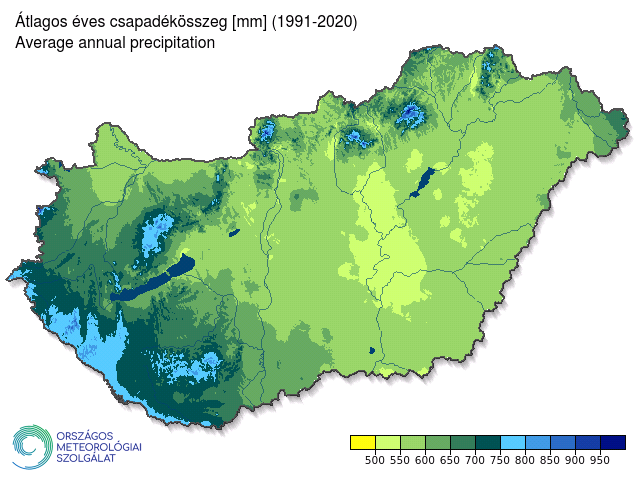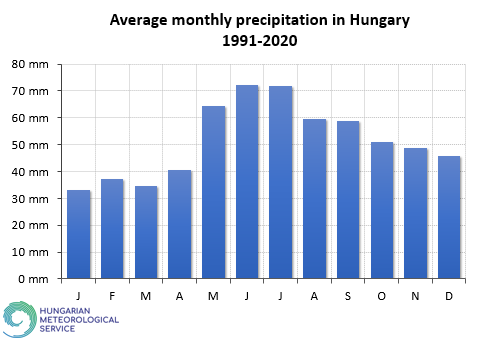Based on the 1991-2020 climatological normal period, the annual precipitation amount in Hungary is 500–800 mm, but there are remarkable differences among various regions.
The spatial distribution of annual precipitation in Hungary is influenced by two factors: topography and the Mediterranean climate, with both the Mediterranean Sea and Atlantic Ocean playing a role (Figure 1). Elevation has an enhancing effect on precipitation, with an increase of 100 meters resulting in an approximate 35 mm increase in annual precipitation. Conversely, distance from the seas has a decreasing effect on precipitation. The south-western region of the country and high-altitude areas, particularly the Bükk Mountains, receive the highest annual precipitation, with typical values exceeding 800 mm. In contrast, the contiguous area along the Zagyva, Tisza, and Hármas-Kőrös rivers is the driest, with annual precipitation ranging from 500-550 mm. In general, precipitation levels decrease from the southwest to the northeast. Due to the significant year-to-year variability of precipitation, there may be substantial deviations from the long-term average in the spatial distribution of the annual precipitation.

Figure 1
Average annual precipitation in Hungary based on the 1991–2020 period
Most of the precipitation falls between May and July, while the least falls between January and March (Figure 2). In previous normal periods, February was the driest month, but in the recent one January is the driest, and September and October have become significantly wetter, causing the disappearance of the secondary precipitation maximum in November.

Figure 2
Average monthly precipitation in Hungary based on 1991-2020 data
Precipitation is a highly variable meteorological parameter in the region of Hungary, exhibiting significant year-to-year fluctuations in its quantity. The changeable behaviour of precipitation is presented in the series of observation that show the amount of precipitation in the wettest years can be three times that of the driest years, and a complete absence of precipitation in any month can occur.











